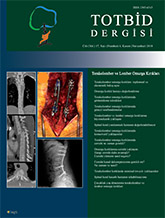
The incidence of traumatic injuries of the spinal column compared to all fractures is reported to be 4–23%. However, their influence on patients` social, functional, and financial situation is more significant than other injuries, as they may contribute to disability with long-term consequences. Fracture classification has great impact on the management of vertebra fractures. The ideal classification should be relatively simple to use, reproducible, define prognosis, and be guide for therapeutic decision making. Classification systems that meet these criteria facilitate academic and practical communication between surgeons. Historical classification systems depend on 2 or 3 column stability, mechanism of injury or specific osseous injury type. Recent classifications evaluate morphology of the injury, the integrity of the posterior ligamentous complex and neurological status of the patient. In North America, many spine surgeons use the Thoracolumbar Injury Classification System; in contrast, many European surgeons commonly use the Magerl system. Currently, AOSpine Thoracolumbar Injury classifications simultaneously consider the morphological description of spinal column injuries, all major modes of failure and clinical features such as neurological status and treatment modifiers. Several agreement studies demonstrated substantial inter- and intra-observer reliability for AOSpine Thoracolumbar Injury classification that can be used for communication between surgeons, planning treatment, and academic purposes.